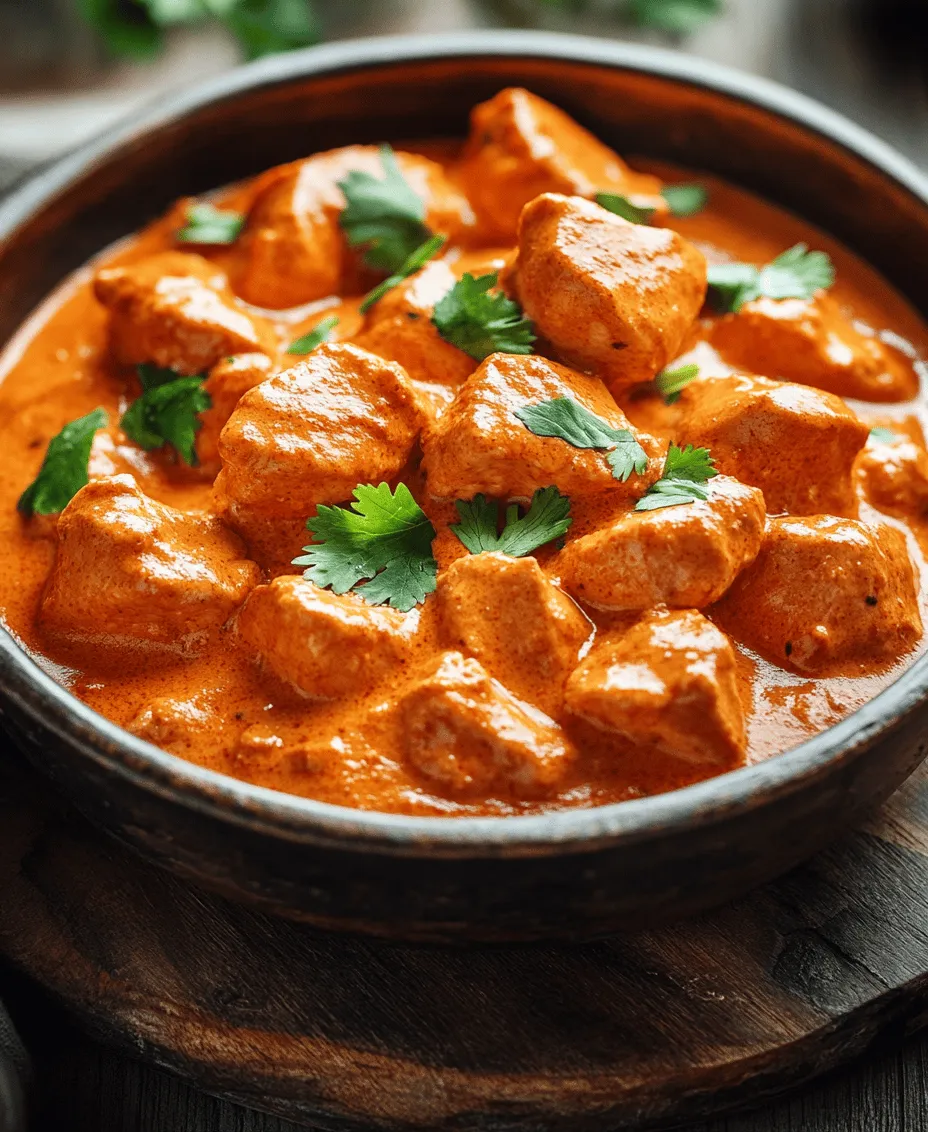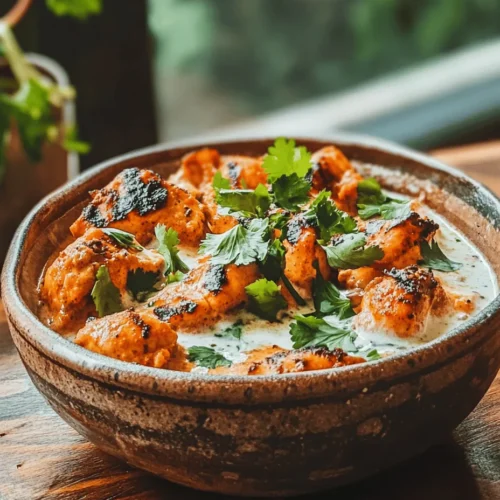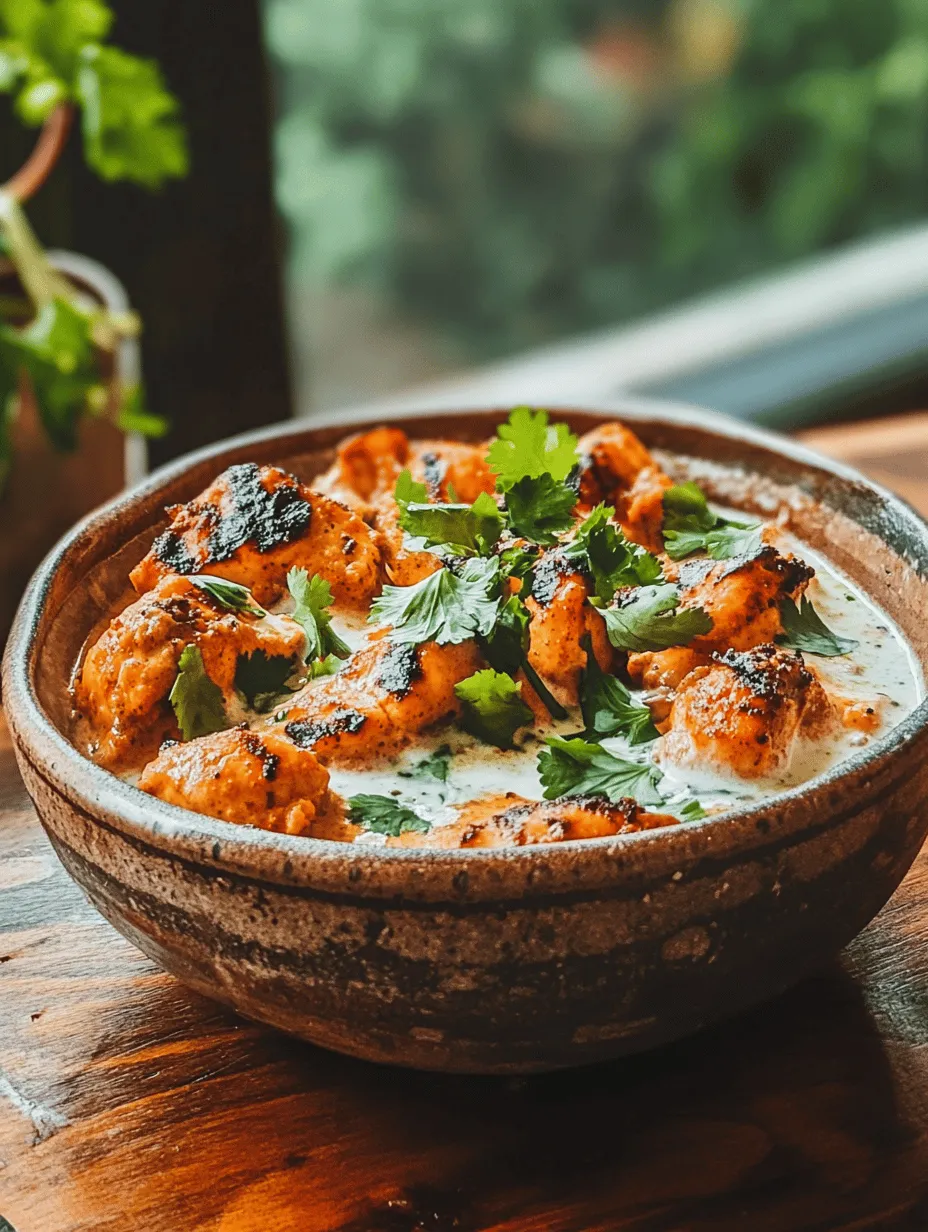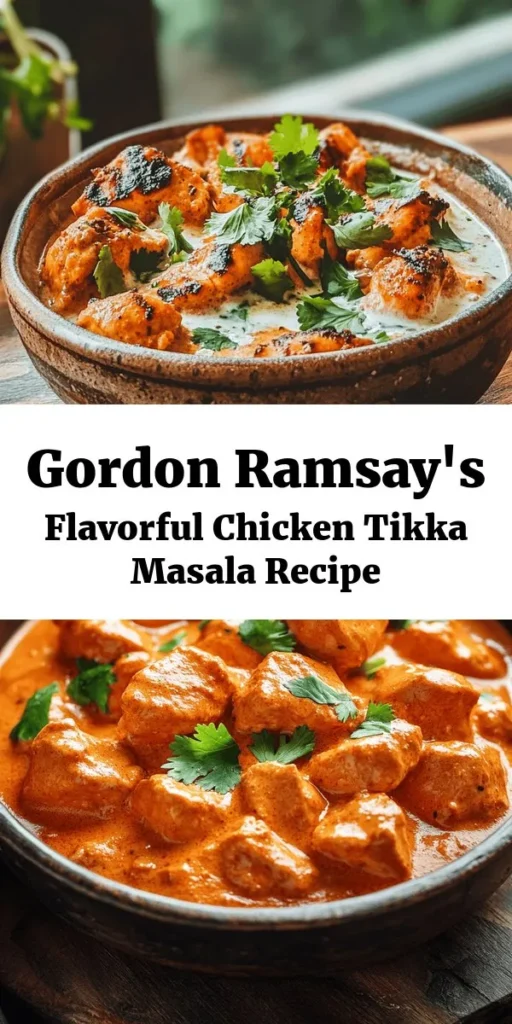Chicken Tikka Masala is a dish that has captured the hearts and palates of food lovers around the globe. This beloved recipe, which beautifully marries rich flavors and aromatic spices, has its roots in Indian cuisine, yet has been embraced and adapted by various cultures, making it a staple in many households. Among the numerous adaptations, Gordon Ramsay’s Ultimate Chicken Tikka Masala stands out as a beacon of culinary excellence. Known for his expertise in the kitchen and his passion for flavor, Ramsay brings a unique twist to this classic dish, elevating it to new heights.
The Origins of Chicken Tikka Masala
The origins of Chicken Tikka Masala are somewhat ambiguous, intertwining the culinary traditions of India and the United Kingdom. While the dish is often associated with Indian cuisine, it is believed to have been created in the UK by South Asian chefs as a response to the British palate’s preference for richer, creamier sauces. The result is a dish that features marinated chicken pieces, grilled to perfection and then simmered in a luscious, spiced tomato-based sauce. The combination of marination and cooking techniques is essential to achieving the authentic taste that has made Chicken Tikka Masala a beloved favorite.
In Gordon Ramsay’s interpretation, the emphasis on high-quality ingredients, meticulous marination, and mastery of cooking techniques ensures that each bite is bursting with flavor. Ramsay’s version highlights the importance of balancing spices and using fresh ingredients, making it a recipe that resonates with both novice cooks and seasoned chefs alike.
Understanding the Ingredients
To unlock the authentic taste of Chicken Tikka Masala, it is essential to understand the key components of the recipe. Each ingredient plays a critical role in achieving the dish’s signature flavor profile, and Ramsay’s recipe is no exception. Let’s delve into the essential ingredients that transform simple chicken into a culinary masterpiece.
The Chicken Marinade
The marinade is the foundation of flavor for Chicken Tikka Masala, and Gordon Ramsay’s marinade is a harmonious blend of tangy, spicy, and aromatic elements. Here’s a breakdown of each ingredient and its importance:
– Yogurt: The star of the marinade, yogurt serves as a tenderizing agent, breaking down the proteins in the chicken. This results in a more succulent texture, allowing the chicken to absorb all the flavors from the spices and aromatics. The acidity in yogurt also adds a subtle tang that enhances the overall taste of the dish.
– Lemon Juice: A splash of lemon juice not only complements the yogurt but also brings a zesty brightness to the marinade. The acidity helps to further tenderize the chicken while adding a refreshing note that cuts through the richness of the sauce.
– Garlic and Ginger: These two aromatic ingredients are often referred to as the backbone of Indian cooking. Garlic provides a robust, savory flavor, while ginger adds warmth and a hint of spice. Together, they create a fragrant base that elevates the marinated chicken.
– Spices: A blend of spices is what makes Chicken Tikka Masala truly exceptional. This recipe typically includes cumin, coriander, garam masala, turmeric, and chili powder. Each spice contributes its unique flavor:
– Cumin brings earthiness and warmth.
– Coriander adds a citrusy, floral note.
– Garam Masala is a complex mix of spices that adds depth and warmth.
– Turmeric imparts a vibrant color and a mild bitterness.
– Chili Powder provides the necessary heat, which can be adjusted based on personal preference.
– Salt: While it may seem simple, salt is crucial in enhancing the flavors of the other ingredients. It helps to draw out moisture and infuse the chicken with the marinade’s spices, ensuring every bite is packed with flavor.
Choosing the Right Chicken
When it comes to selecting chicken for Tikka Masala, the choice between chicken thighs and breasts can significantly affect the dish’s texture and flavor.
– Chicken Thighs: Thighs are often preferred for their higher fat content, which leads to a juicier and more flavorful result. They are also more forgiving when cooked, as they remain moist even if slightly overcooked.
– Chicken Breasts: While leaner and lower in fat, chicken breasts can dry out quickly if not cooked carefully. However, they are a popular choice for those seeking a lighter option.
For the best outcome, boneless chicken is recommended for ease of preparation and marination. Cutting the chicken into bite-sized pieces allows for thorough marination, ensuring that every piece is infused with flavor and remains succulent during cooking.
Marination Process
The marination process is a crucial step in preparing Chicken Tikka Masala. It is during this time that the chicken absorbs the flavors of the yogurt, spices, and aromatics, resulting in tender, flavorful meat.
– Time: For optimal flavor absorption, marinating the chicken for at least 1 hour is recommended, though overnight marination is ideal. This extended time allows the ingredients to penetrate deeper into the meat, creating a more flavorful dish.
– Coating the Chicken: To properly coat the chicken, combine all marinade ingredients in a bowl and add the chicken pieces. Ensure that each piece is thoroughly coated and submerged in the marinade. Using your hands is often the best method to ensure an even distribution.
– Refrigeration: After coating the chicken, cover the bowl with plastic wrap or transfer the mixture to a resealable plastic bag. Place it in the refrigerator, allowing the flavors to meld and the chicken to marinate. Remember to leave it in the refrigerator until you’re ready to cook. This not only enhances the flavor but also keeps the chicken safe and prevents spoilage.
Cooking the Chicken
Once the chicken has marinated to perfection, it’s time to cook it. Gordon Ramsay offers two popular methods for cooking the marinated chicken: grilling and pan-frying. Each method yields delicious results, but they differ in flavor and texture.
– Grilling: Grilling is an excellent option for those looking to achieve a smoky flavor and charred texture. The direct heat from the grill caramelizes the sugars in the marinade, creating a beautifully charred exterior while keeping the chicken moist inside.
– Pan-Frying: For a more convenient method, pan-frying is a great choice. It allows for even cooking and easy monitoring of the chicken’s doneness. Using a heavy-bottomed skillet or frying pan, the chicken can be cooked until golden brown, developing a rich flavor from the browning process.
As you prepare to delve into the cooking methods, keep in mind that each choice will influence the final flavor and presentation of your Chicken Tikka Masala. Ramsay’s ultimate version of this classic dish is not only about the marination and cooking techniques but also about the care and attention given to each step—ensuring that the final result is nothing short of extraordinary.
With this understanding of the ingredients and processes, you are well on your way to mastering Gordon Ramsay’s Ultimate Chicken Tikka Masala. The next steps will guide you through the detailed cooking process, bringing this flavorful dish to life in your kitchen.

The Ideal Temperature for Cooking Chicken
When it comes to preparing Gordon Ramsay’s Ultimate Chicken Tikka Masala, achieving the right cooking temperature for the chicken is crucial. For optimal results, the chicken should be cooked at a temperature of around 400°F (200°C). This higher heat ensures that the chicken cooks quickly, allowing you to develop a beautifully charred exterior while keeping the meat juicy and tender inside.
The Significance of Achieving a Charred Exterior for Flavor
A charred exterior on the chicken not only adds visual appeal but also enhances the flavor profile of your Chicken Tikka Masala. This Maillard reaction, which occurs when the chicken is exposed to high heat, creates complex flavor compounds that give the dish its signature taste. The caramelization of the chicken’s surface results in a smoky, savory essence that beautifully contrasts with the creamy, fragrant sauce.
Cooking Times and Techniques to Ensure the Chicken Remains Juicy
To ensure your chicken remains juicy throughout the cooking process, marinate it for at least one hour before cooking. This step allows the spices and yogurt to penetrate the meat, enhancing flavor while tenderizing the chicken. When it’s time to cook, you should grill or sear the chicken for about 6-8 minutes on each side. The goal is to achieve a golden-brown color on the outside, signifying that it’s cooked through without losing moisture. It’s also essential to use a meat thermometer; the internal temperature should reach 165°F (75°C) for safe consumption, ensuring that your chicken is perfectly cooked.
Creating the Sauce
Now that your chicken is perfectly prepared, it’s time to focus on creating the mouthwatering sauce that defines Chicken Tikka Masala.
Sautéing the Onions to Perfection
Begin by heating a tablespoon of oil or ghee in a large pan over medium heat. Add finely chopped onions and sauté them until they become translucent and soft, usually about 5-7 minutes. The goal is to develop a sweetness in the onions, which will form the foundation of the sauce. Stir frequently to prevent burning, and if you notice the onions starting to catch, lower the heat slightly.
The Aromatic Foundation: Garlic, Ginger, and Green Chilies
Once the onions are perfectly sautéed, it’s time to introduce the aromatics. Add minced garlic, grated ginger, and finely chopped green chilies to the pan. Sauté these ingredients for another minute or two until they are fragrant. The combination of garlic and ginger adds depth and warmth to the sauce, while the green chilies provide a pleasant heat that characterizes this dish.
The Careful Addition of Spices and Their Contributions to the Overall Flavor Profile
Next, it’s time to stir in the spices that will elevate your sauce to new heights. Add ground cumin, coriander, paprika, turmeric, and garam masala to the pan. Toasting the spices for about 30 seconds will release their essential oils, intensifying their flavors. Be cautious not to let the spices burn; if they start to darken too quickly, reduce the heat.
The Choice of Canned Tomatoes and Their Role in the Sauce’s Texture and Taste
After the spices have been toasted, pour in a can of crushed tomatoes. The choice of canned tomatoes is critical; opt for high-quality, whole peeled tomatoes that you can crush yourself, or choose a brand that uses ripe tomatoes. This will ensure a rich, slightly sweet base to your sauce. Stir the mixture well, allowing the tomatoes to incorporate with the spices and aromatics. Let the sauce simmer for about 10-15 minutes, allowing the flavors to meld together beautifully.
The Finishing Touches
Once your sauce has simmered and thickened, it’s time to add the finishing touches. Pour in a cup of coconut milk and a tablespoon of butter. The coconut milk will add a creamy richness to the sauce, balancing out the spices and enhancing the overall flavor. The addition of butter not only adds richness but also rounds out the sauce, giving it a luxurious texture.
Allow the sauce to simmer on low heat for an additional 5-10 minutes, stirring occasionally. This simmering process is crucial for developing a harmonious blend of flavors. Before serving, taste the sauce and adjust the seasoning as necessary, adding salt or a pinch of sugar if desired to balance the acidity of the tomatoes.
Serving Suggestions
Gordon Ramsay’s Ultimate Chicken Tikka Masala is best enjoyed with accompaniments that complement its rich flavors. Traditional options include fluffy basmati rice or warm naan bread. Basmati rice, with its nutty flavor and light, fluffy texture, serves as an excellent canvas for the vibrant sauce, allowing you to soak up every bit of flavor.
Naan, on the other hand, is perfect for scooping up the chicken and sauce, making each bite an experience. In Indian culture, these accompaniments are not just food; they represent hospitality and the joy of sharing a meal with loved ones. Consider serving with a side of cucumber raita, a cooling yogurt-based condiment that helps balance the spices in the dish.
Nutritional Information
Understanding the nutritional profile of your Chicken Tikka Masala can enhance its appeal as a wholesome meal choice. A typical serving contains approximately 350-450 calories, depending on the amount of oil and coconut milk used. The dish is high in protein, thanks to the chicken, making it an excellent choice for muscle building and repair.
The yogurt in the marinade adds probiotics, which are beneficial for gut health, while the spices used are packed with antioxidants and anti-inflammatory properties. Coconut milk provides healthy fats, which can support heart health when consumed in moderation. Overall, Chicken Tikka Masala can be a balanced meal when served with a side of vegetables or a fresh salad, contributing to a wholesome diet.
Conclusion
Creating Gordon Ramsay’s Ultimate Chicken Tikka Masala is not just about following a recipe; it’s an exploration of flavors, techniques, and culture. From the ideal cooking temperatures that ensure juicy chicken to the aromatic spices that form a rich sauce, each step brings you closer to a dish that is both comforting and sophisticated.
Embrace the cooking process as a rewarding experience, celebrating the fusion of culinary techniques and ingredients that make this dish a standout favorite in many kitchens around the world. Whether you’re impressing guests or enjoying a cozy night in, this Chicken Tikka Masala is sure to delight the senses and leave a lasting impression. So roll up your sleeves, gather your ingredients, and embark on this culinary adventure that promises to bring the vibrant flavors of India right to your dining table.



